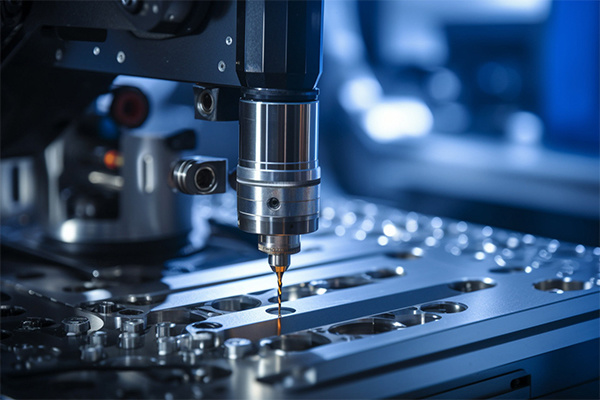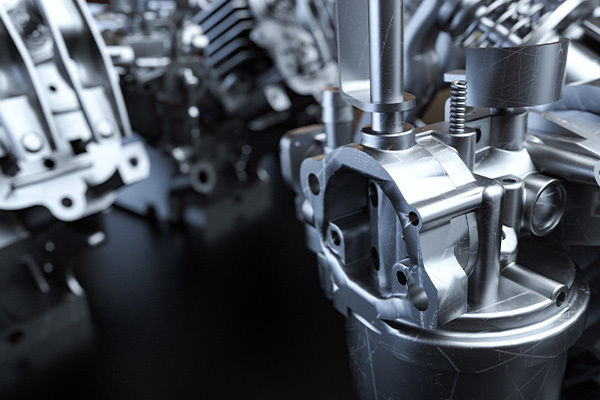Information Details
Development of machine tools
Release time:
2023-07-04 15:24
Going to the external market
From a global perspective, countries strong in machine tools are mostly (mechanical/discrete) manufacturing powerhouses. This is because high-end manufacturing inevitably requires high-end machine tools, and the level of high-end manufacturing also guarantees the production of high-end components.
Therefore, the path for Chinese machine tools is strongly correlated with the upgrading of Chinese manufacturing. The overall trend in manufacturing will directly affect the future of machine tools. The development strategy for machine tools should be aligned with the major trends in manufacturing, and the manufacturing development strategy should also consider the industrial development of machine tools and other industrial equipment (tool-type industrial products).
It is first necessary to clarify that machine tools are a type of production tool that serves the manufacturing industry. The industrial upgrading of machine tools and other industrial equipment is enhanced along with the overall upgrading of the manufacturing industry. Without the support of local manufacturing, the machine tool industry would struggle to thrive. Conversely, when there are enough domestic high-end projects, domestic machine tools will accumulate sufficient experience and develop corresponding technologies.
For example, the development of ultra-large heavy machine tools in our country is leading the world, as these companies can secure orders for ships, submarines, nuclear power, etc. With more similar equipment being produced, experience naturally improves. In recent years, such large projects have been rare in developed countries.
However, we must remain clear-headed: relying solely on internal circulation projects is insufficient for most industrial equipment manufacturers to achieve technological upgrades; there must be a sufficiently large external market.
The aircraft manufacturing industry in the United States is already unparalleled globally, whether for civilian or military use, most aircraft manufacturing occurs domestically. Even though this internal circulation market is already quite large, the U.S. has only cultivated one high-end special machine tool company, Electroimpact, which has almost secured all orders for the riveting process in U.S. aircraft manufacturing with its wire laying machines, automatic drilling and riveting machines, and assembly lines. Aircraft assembly relies heavily on riveting, and this equipment market is not small, with a sufficiently high profit margin. Even so, the company only has 600 employees, of which 400 are engineers. For European and American countries, a machine tool company with over 500 employees is already quite large, but this number is considered a small to medium-sized enterprise domestically. Moreover, Electroimpact has also secured many orders in the UK, Europe, and Middle Eastern countries. It is evident that relying on internal circulation orders can only support a few leading enterprises.
Industrial equipment, which has a tool nature, relies on orders generated from the growth of the manufacturing industry. If production capacity is not expanded, factories do not need to purchase new machine tools. Therefore, excellent machine tool companies must vigorously develop overseas markets; as long as there is no global manufacturing recession, there will always be some overseas orders that provide relatively stable cash flow for enterprises. This means that to survive, one must go abroad to participate in "external circulation" and obtain sufficient market support to upgrade domestic machine tool technology. Clearly, for most machine tool companies, only by becoming an expert in a specific niche can they secure this market, using technological barriers to achieve higher profit margins and avoid falling into price wars. However, niche markets are usually quite small, so it requires searching worldwide. Some projects, even with a high concentration of industry in China, still face the risk of supply chain relocation. Once the supply chain moves abroad, manufacturers have no choice but to relocate production to avoid export restrictions.
In fact, even in countries with weak industries, there are often one or two decent machine tool companies. Equipment companies that take the low-end route should set up factories as early as possible in the market location, leveraging capital to allow local workers to create wealth for the company.
Due to the high user stickiness of industrial equipment, manufacturers often find it difficult to change equipment suppliers. If a new supplier encounters problems, the impact on production can be significant. Therefore, they prefer to choose suppliers with whom they have a long-term cooperation and more stable performance, even if the equipment is slightly more expensive.
When this manufacturer gradually develops into an industry leader and invests in factories around the world, the equipment they choose will also be from local suppliers with whom they have collaborated for a long time.
For example, Korean machine tools were initially not well-regarded, and Chinese companies were far less accepting of Korean machine tools compared to Japanese and Taiwanese ones. However, when Korean automotive and ship component manufacturers moved their production bases to China, all processes and equipment were copied from the original factories, and business owners still chose to import equipment from Korea. As a result, Korean machine tools began to thrive in China. For instance, Doosan Machine Tools has made significant inroads in the turbine blade processing field in recent years, threatening to replace Mazak and Mori Seiki.
As low-end manufacturers that widely use domestic machine tools gradually enter the mid-to-high-end supplier club, domestic machine tools will naturally gain recognition in the industry.
2024-08-29
Study of Germany's high-end manufacturing industry
2023-11-02
Germany European Machine Tool Exhibition
2023-11-02
2023 Innovation and Entrepreneurship Competition
2023-10-27








